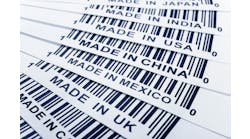When it comes to success in implementing a supply chain plan, forecasting well goes hand in hand with recognizing that different products require a different supply chain approach.
"We look at orders and forecasts to manage inventory to optimum levels," notes Si Gutierrez, vice president central planning and production control with chipmaker National Semiconductor Corp. "We don't want too much inventory because chips don't age well. We keep an eye on ROI, but we must have enough inventory to meet demand."
National sells a variety of products, Gutierrez points out. "Some are commodities that need to be on the shelf when the customer needs them. Some have multiple sources in addition to National. Some are proprietary products — customers can get the same functionality from a competitor but products are not compatible. We also make full custom products — designed for each customer."
So National enhances supply chain flexibility by using three distinct build strategies: build to forecast, build to die bank (raw chips) and build to order. "We have models that attempt to predict the future and we analyze industry trends to see where the business is going," Gutierrez explains.
John Mascaritolo, director of global logistics with financial electronics company NCR Corp., has a pretty good idea where the business is going; trouble is, that business is in a constant state of flux. Even though the supply chain is a moving target, he works continuously on improving its operation.
"Supply chains are much different than they were just a short time ago," he notes. "Around the world, we're not just going to and from a single point. Now we're doing in-country deliveries, so we're looking for carriers to take on total responsibility. We're minimizing handoffs because they cost time, damage product and indicate a lack of responsibility on the part of any one carrier."
NCR's two-year-old supply chain model still makes sense, but Mascaritolo notes it takes time to get to 100% implementation because of the constant change.
"We revise continuously," he says. "Origin points used last year aren't there any more. Carriers merge or redesign their networks or capacity. Regulatory issues change. These all add stress and pressure on the supply chain." Changing the entire supply chain approach at IBM Corp. undoubtedly was stressful, but the benefits have proven the value of the new organization. IBM's Integrated Supply Chain is a line organization, reporting to the very top level of the business.
"This elevated position in the company creates far different expectations than would a traditional supply chain," states Patrice Knight, vice president of business transformation within IBM's Integrated Supply Chain. "Business transformation is a process and technology group that works together to improve the workflow of the supply chain," she explains.
"The supply chain requires incredibly talented people with diverse backgrounds," Knight continues. "We directly affect the success of the corporation, clearly demonstrated by key top-level growth and profitability measures."
For example, in 2003, IBM had its lowest inventory levels in 30 years. Furthermore, the company achieved a 95% on-time delivery rate to clients. "We reduced days of orders outstanding by two days, while improving cash flow," Knight says. "Streamlined systems reduced support costs by $200 million. At the end of second quarter 2004, the Integrated Supply Chain had synchronized demand/supply for the lowest number of unfilled orders in our history. And we've greatly improved productivity of the sales force."
The Integrated Supply Chain's drive from a cost center to a competitive weapon is only two years old, Knight points out. "In 2002, we integrated 30 internal supply chain organizations. We weren't leveraging the opportunities of a single organization. We've since developed a specific strategic imperative, worked on alignment and common goals, dealt with people issues, and looked at partners in an integrated way."
Integrating IBM's $40 billion annual supplier spend created a wealth of opportunity. "Integrating suppliers and their development capital into supply chain planning facilitates a deep and clear focus of the entire supply chain," suggests Knight. "One benefit has been more robust profit through quicker problem resolution. At IBM, supply chain demand imbalances that used to take three months to resolve now disappear in three weeks. This type of problem resolution requires a management system that connects the right parties. And it's based on actionable, trusted sources of information," she continues. "That means we determine key pieces of information, then identify trusted sources. This lets people stop fighting each other and act on the information."
Whether people are fighting each other or cooperating splendidly, implementing a supply chain plan is bound to meet obstacles. National Semiconductor's Gutierrez identifies two common glitches. "A big one is internal data cleanliness. We have a complex business, offering 15,000 different chips, so unclean data could lead us to build the wrong thing. Or we could release a forecast to suppliers that is no longer valid because of market changes or wrong assumptions,"he admits.
To guard against forecast foulups, Gutierrez has declared that forecasts must make sense. "For example," he notes, "the cell phone market grew well in 2003. If the forecast says we'll need 20% more chips, we ask, 'Does that makes sense, given current market conditions?' Everyone can agree that's a reasonable expectation for total market growth. The challenge comes in meeting with major players in the industry. Everyone wants to win and everyone's planning for success, so they add 30%. But not everyone wins. If you add up all the players in the industry, you might double a realistic forecast," he explains.
At Dow Corning Corp., realistic forecasts may be overpowered by cultural issues. "Our largest opportunity in supply chain execution — and our largest potential glitch — is the astronomical growth rate in China and Asia," notes Lori Schock, site supply manager with the chemical company. "As a global company managing its supply chain from a global perspective, we're dealing with cultures extremely different than ours.
"For example, in the U.S., we consider 30 days of inventory in the warehouse too much — we cannot afford to hold that much," Schock says. "From Japanese management's perspective, if they have six months of inventory in the warehouse, they are nervous that they don't have enough. Imagine our customer-facing people in Japan, China, or India trying to understand customers' business practices and requirements for that part of the world and translating them into Dow Corning's business plan."
In addition to issues of cultural differences and varying import/export processes, NCR's Mascaritolo notes, "On the supply chain execution side, glitches can be infrastructure-related in serving a new country. Some countries are more logistics-friendly than others. Local knowledge and infrastructure are important, especially in-country knowledge of how to get things into and out of the country," he adds.
Tracking import/export moves is just one aspect of measuring supply chain success. "We have global metrics that are supplier specific," says Mascaritolo. "We gather shipping information and compare year to year as well as month to month. Manufacturing people measure against capacity output. We look at last year's actual vs. current activity."
National Semiconductor also uses forward looking and historic measures. "We sit down with our demand planning group each week to review our forecast and ensure it still makes sense," notes Gutierrez. "We gauge the effectiveness of forecasting at a high level rather than on each of our 15,000 chips. We also look at how we're scheduling orders compared to how customers requested them and fixing any mismatches."
Gutierrez's team also looks at last week's results, asking how well the company met customer request dates vs. measures such as total months of inventory, dollars and return, and obsolescence expense. They look at 15 key performance indicators such as how National did compared to forecast, then they analyze the difference between forecast and performance.
At Dow Corning, the supply chain planning process begins with consideration for how to measure performance and sustain the desired business performance over the long term, according to Schock. "Using a core set of metrics to compare what we plan to what we deliver gives us a measure of how well we're planning," she says. "We know our forecasts won't be 100% accurate, but we strive to make them better."
Another critical measure at Dow Corning is supply chain constituents' level of satisfaction. That includes all the people — internal and external — and all the functions involved. "We ask, 'Are the decisions I'm making satisfying everyone in this supply chain or am I jerking someone around?' We look at the process, input and output measures for each of these constituents," states Schock.
Internal constituents — employees — can track the success of the company daily. Dow Corning's intranet home page features an indicator on a pie chart that points to yellow, green or red. Based on actual sales compared to sales planning for the month, a red indicator means no chance of meeting the plan, yellow suggests it's still possible to meet the goal, and green says the company is on target.
"People operating in the plant watch the sales indicator because our variable incentive program is tied to these key indicators. When it's green, they're happy. When it just touches yellow, they want to know what's going on," Schock says.
Since the indicator is typically green, Schock states, "It's a thing of beauty to see all parts of the supply chain aligned to deliver the results we deliver." If you don't see that kind of fitness and beauty in your supply chain, it may be time for an overhaul.
resourcesDow Corning Corp. IBM Corp. National Semiconductor Corp. www.national.com NCR Corp. |


